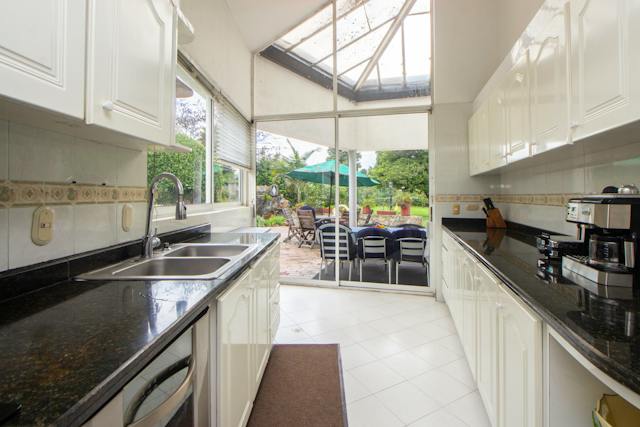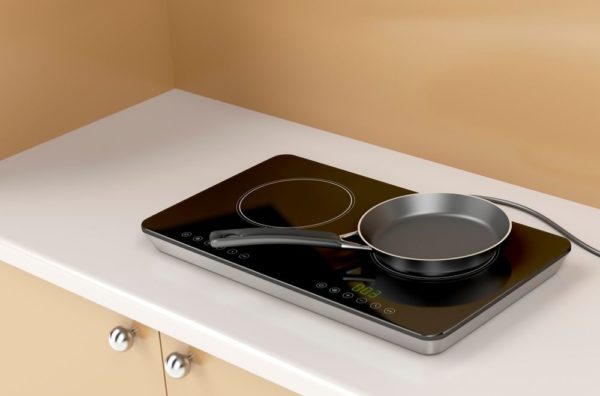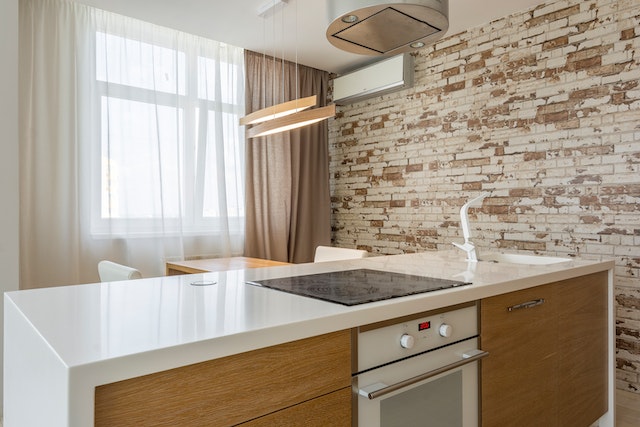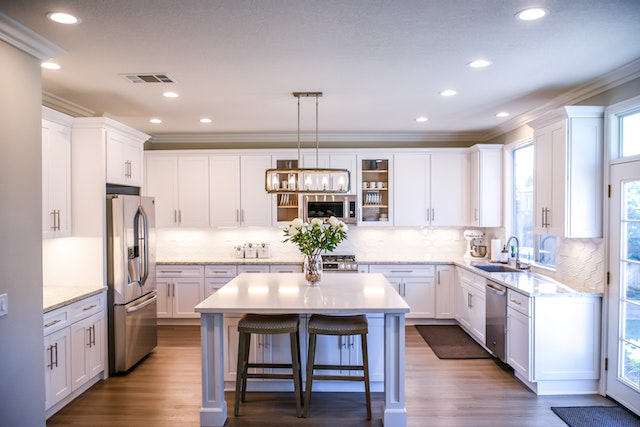Are you ready to transform your space into a haven that reflects your unique style and personality? Picture yourself walking into a room that instantly makes you feel at home, a space that emanates warmth and comfort.
The key to achieving this lies in choosing the right flooring material. But with so many options available, where do you begin? Don’t worry, we’ve got you covered. In this article, we will guide you through the process of selecting the perfect flooring material for your needs and desires.
From assessing durability and maintenance requirements to exploring different styles and aesthetics, we will help you make an informed decision. We’ll also delve into the pros and cons of various flooring materials, so you can choose what aligns best with your budget and lifestyle.
So, let’s embark on this exciting journey together and discover the flooring material that will not only enhance your space but also make you feel like you truly belong.
1. Considering Durability and Maintenance Requirements
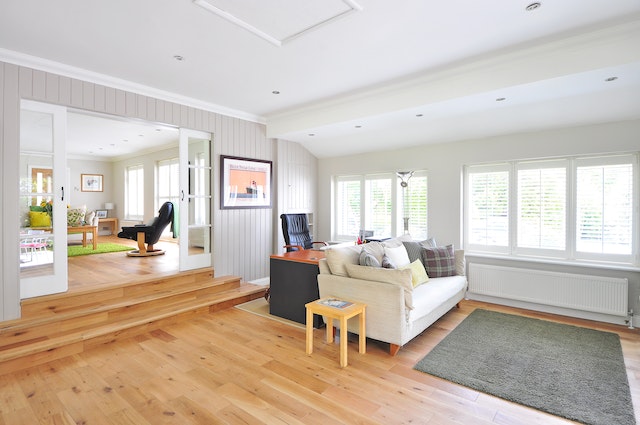
When choosing the perfect flooring material, it’s important to consider durability and maintenance requirements. You want a floor that not only looks good but also withstands the test of time.
Think about how much foot traffic your floor will endure and how often you’re willing to put in the effort to maintain it. If you have a busy household with kids and pets constantly running around, you’ll need a durable flooring material that can handle the wear and tear.
Options like hardwood, tile, or laminate are great choices as they can withstand heavy traffic and are easy to clean. They’ll provide the durability you need while still maintaining a stylish look.
On the other hand, if you prefer something low-maintenance and don’t want to spend too much time cleaning, vinyl or carpet might be better options. Vinyl flooring is known for its durability and easy maintenance, making it a popular choice for many homeowners. Carpet, on the other hand, can be a cozy and comfortable option, but it requires regular vacuuming and occasional deep cleaning to keep it looking its best.
Remember, finding the right flooring material is all about finding the perfect balance between durability and maintenance. Consider your lifestyle, the amount of traffic in your home, and your willingness to put in the effort to maintain your floors. By doing so, you’ll ensure that your flooring material not only looks great but also lasts for years to come, giving your home a sense of belonging and comfort.
2. Exploring Different Flooring Styles and Aesthetics
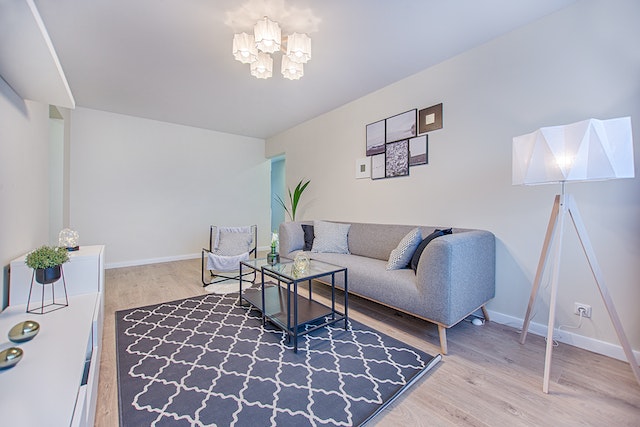
While considering various flooring options, it’s important to explore the diverse range of styles and aesthetics available. Choosing the right flooring style can greatly enhance the overall look and feel of your space, creating a sense of belonging and personalization.
Here are two sub-lists to help you navigate through the different flooring styles and aesthetics:
1. Traditional and Timeless
- Hardwood: Exudes warmth and elegance, perfect for creating a cozy and inviting atmosphere.
- Ceramic or Porcelain Tile: Offers a classic, durable, and versatile option with endless design possibilities.
2. Modern and Contemporary
- Luxury Vinyl: Mimics the look of natural materials like hardwood or stone, while providing easy maintenance and durability.
- Concrete: Provides a sleek and minimalist aesthetic, ideal for a trendy and industrial vibe.
By exploring these different styles, you can find the flooring option that best reflects your personal taste and complements your existing decor. Whether you prefer a more traditional or modern aesthetic, there’s a flooring style that’ll make you feel right at home. Remember, the key is to choose a style that resonates with you and creates a sense of belonging in your space.
3. Assessing Budget and Cost Factors

Let’s dive into assessing your budget and considering cost factors when it comes to selecting the perfect flooring for your space. Choosing the right flooring material is not only about aesthetics but also about finding an option that fits your budget. Here, we will discuss the different cost factors you should consider before making a decision.
When assessing your budget, it’s important to take into account not only the upfront cost of the flooring material but also the long-term maintenance and replacement costs. Some flooring options may be more expensive initially but require less maintenance and have a longer lifespan, making them a more cost-effective choice in the long run.
Remember, these are just average cost ranges, and actual prices may vary depending on factors such as the quality of the material and installation fees.
By carefully considering your budget and the cost factors associated with each flooring option, you can choose a material that not only fits your financial constraints but also provides the desired aesthetic appeal and durability for your space.
4. Understanding the Pros and Cons of Different Flooring Materials
To truly grasp the advantages and disadvantages of various flooring materials, you must first understand how each option can transform your space into a breathtaking oasis or a lackluster nightmare. Choosing the right flooring material is crucial as it can greatly impact the overall look and feel of your home.
Let’s explore some popular flooring options and their pros and cons.
Carpet is a cozy and affordable choice that provides warmth and comfort underfoot. It also helps with sound insulation, making it perfect for bedrooms and living rooms. However, carpets can be difficult to clean and may trap allergens and dust.
Hardwood floors are timeless and elegant, adding a touch of sophistication to any room. They are durable and can last for years with proper care. However, hardwood is susceptible to scratches and can be expensive to install and maintain.
Tile is a versatile option that comes in various styles and patterns. It is waterproof and easy to clean, making it ideal for kitchens and bathrooms. On the downside, tile can be cold and hard underfoot, and the grout lines may require regular maintenance.
Vinyl flooring is a cost-effective choice that mimics the look of hardwood or tile. It is water-resistant and easy to clean, making it suitable for high-traffic areas. However, vinyl may not offer the same level of durability as hardwood or tile.
Laminate flooring is a budget-friendly alternative to hardwood. It is resistant to scratches and stains, making it ideal for households with pets and children. However, laminate may not add as much value to your home as hardwood.
By understanding the pros and cons of different flooring materials, you can make an informed decision that suits your style, budget, and lifestyle. Remember, your choice of flooring can transform your space into a welcoming and inviting oasis, so choose wisely.
5. Seeking Professional Guidance and Expert Advice
Are you unsure of where to turn for expert guidance when it comes to finding the perfect flooring for your home? Don’t worry, you’re not alone. Choosing the right flooring material can be a daunting task, but seeking professional advice can make the process much easier and more enjoyable.
One of the best ways to find expert guidance is by consulting with a flooring specialist. These professionals have extensive knowledge and experience in the industry and can provide valuable insights into the different types of flooring materials available. They can help you understand the pros and cons of each option and guide you toward making the best decision for your specific needs and preferences.
Another great resource for expert advice is online forums and communities dedicated to home improvement and interior design. These platforms allow you to connect with like-minded individuals who’ve already gone through the process of choosing flooring materials. You can ask questions, share your concerns, and receive valuable recommendations from people who’ve firsthand experience.
Lastly, don’t forget about the importance of visiting local flooring showrooms. These establishments often have knowledgeable staff who can offer expert guidance and recommendations based on your specific requirements. They can show you different flooring options, explain their benefits and drawbacks, and help you visualize how each material would look in your home.
Remember, seeking professional guidance and expert advice is a valuable step in choosing the right flooring material. By reaching out to flooring specialists, engaging with online communities, and visiting showrooms, you can find the perfect flooring for your home and feel confident in your decision.
Frequently Asked Questions
Can I install hardwood flooring in my basement?
Yes, you can install hardwood flooring in your basement. However, it’s important to consider moisture levels in the basement. Make sure to choose engineered hardwood or install a moisture barrier to prevent damage.
What is the best flooring material for homes with pets?
The best flooring material for homes with pets is vinyl. It is durable, resistant to scratches and stains, and easy to clean. Plus, it provides a comfortable and safe surface for your furry friends to walk and play on.
Can laminate flooring be installed in bathrooms and kitchens?
Yes, laminate flooring can be installed in bathrooms and kitchens. It’s a durable and water-resistant option that mimics the look of hardwood. You’ll enjoy the beauty of wood without worrying about water damage.
Are there any eco-friendly flooring options available?
Yes, there are several eco-friendly flooring options available. Bamboo, cork, and reclaimed wood are great choices. They are sustainable, and renewable, and can add a natural and earth-friendly touch to your home.
How do I know if my subfloor is suitable for installing tile flooring?
To determine if your subfloor is suitable for installing tile flooring, check for any cracks, unevenness, or moisture issues. Use a level to ensure it is flat and sturdy. If necessary, make any repairs or consult a professional.
Conclusion
So there you have it, folks! You’ve now uncovered the secrets to choosing the perfect flooring material for your space. From weighing durability and maintenance needs to exploring various styles and aesthetics, and even considering your budget, you’re well-equipped to make an informed decision.
Remember, when it comes to flooring, the world’s your oyster, so don’t be afraid to think outside the box. Seek professional guidance if needed, and before you know it, you’ll be walking in the sunshine with your brand-new floors!
